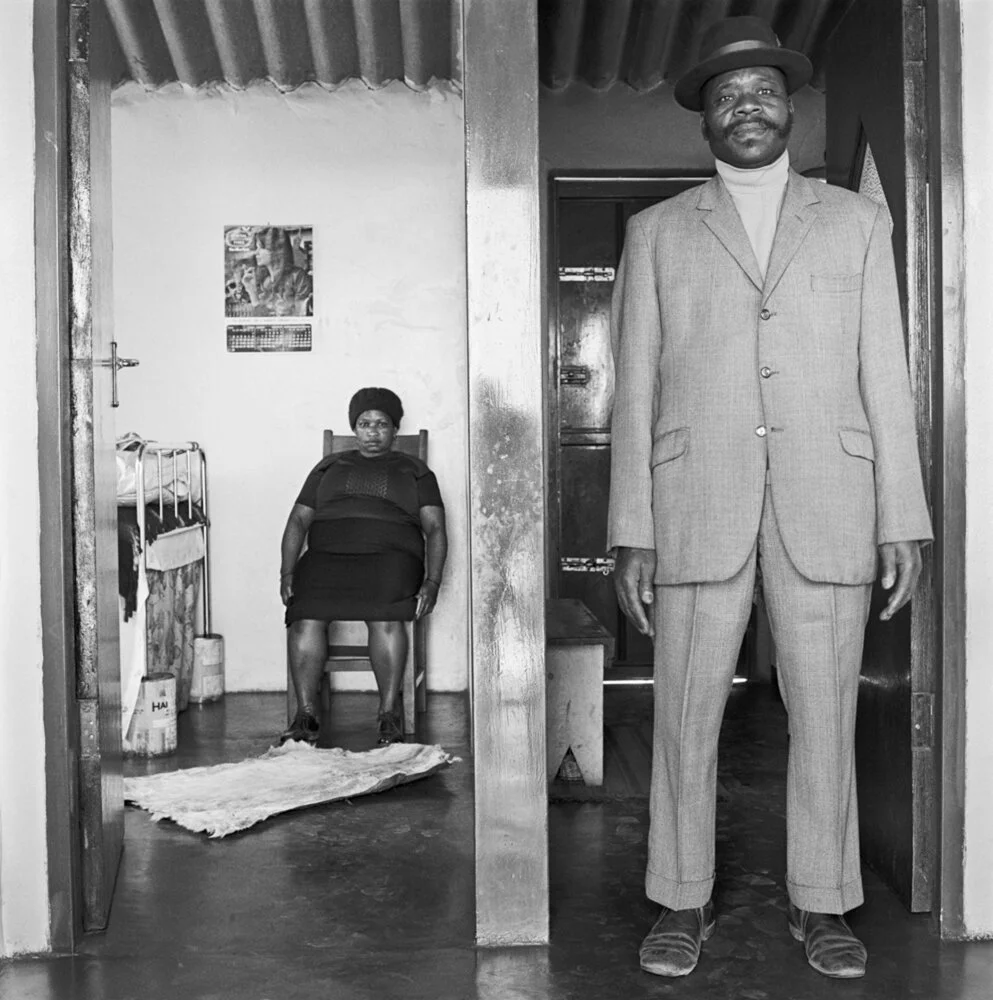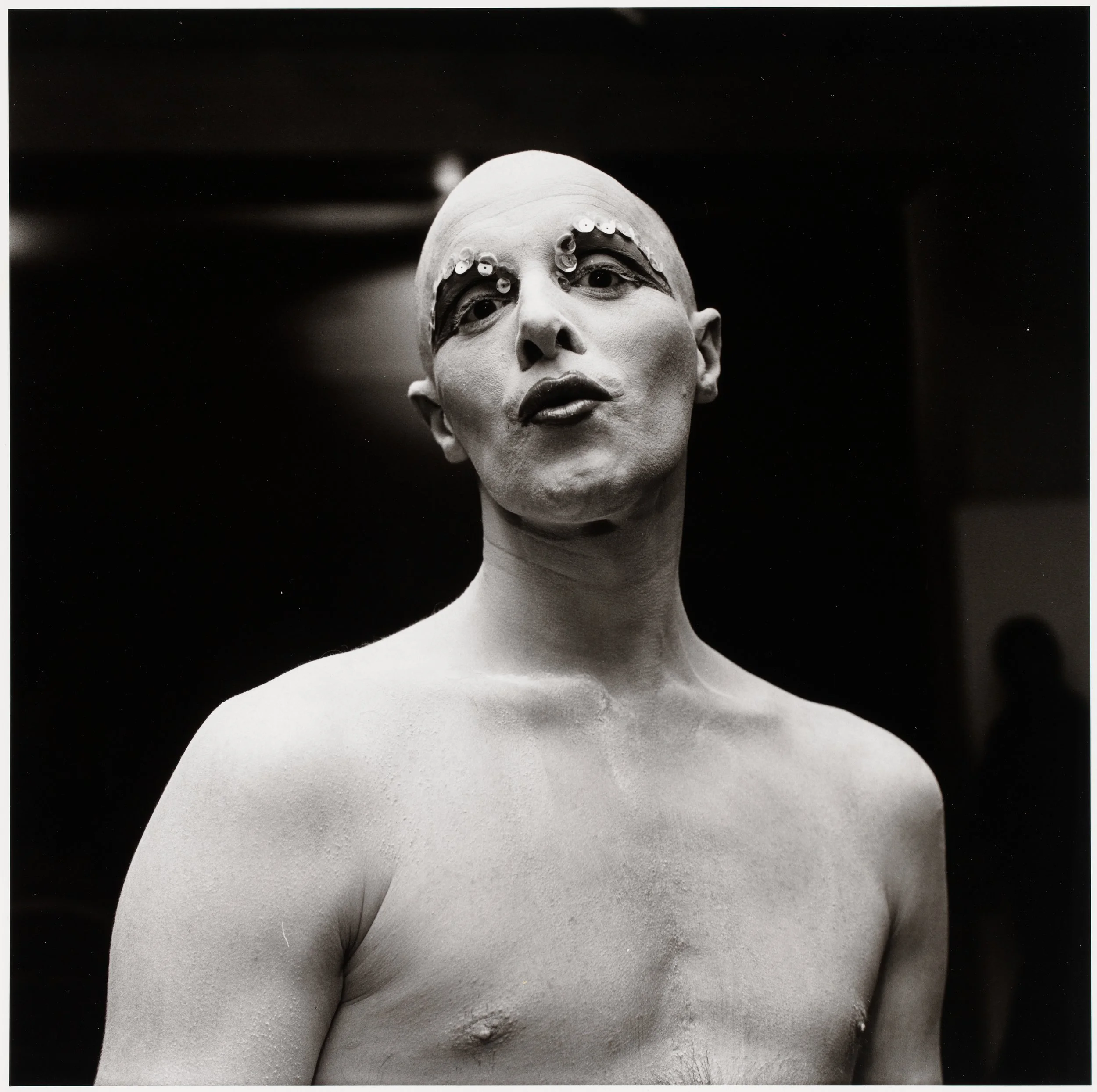David Goldblatt: No Ulterior Motive | Art Institute of Chicago
David Goldblatt. Sylvia Gibbert in her apartment, Melrose, Johannesburg, 1974. The Art Institute of Chicago, promised gift of Cecily Cameron and Derek Schrier. © The David Goldblatt Legacy Trust.
Written by Jania Marissa
Photo Edited by Lyz Rider
David Goldblatt’s newest exhibition No Ulterior Motive showcases the history of South Africa both during and after apartheid. Having spent his life in Johannesburg, Goldblatt dedicated his life to documenting the lives, the culture, and soul of the South African people, beautifully seen through his seven-decade-long body of work. All aspects of the South African zeitgeist are shown in his work, and the series proves to be a profound look into the life of a South African, highlighting the cultural and political background thatshape both their lives and identities.
David Goldblatt. Swerwers, nomadic sheep shearers and farmworkers descended from the San hunter-gatherers and Khoi pastoralists. Without work for four months they lived in the ITALIC gang, the corridor between farms, fences and roads, hunting, fishing when they could and eating roadkill, near Nuwe Rooiberg, Northern Cape, 18 September 2002, 2002, printed later. The Art Institute of Chicago, promised gift of Cecily Cameron and Derek Schrier. © The David Goldblatt Legacy Trust.
No Ulterior Motive literally means that Goldblatt is documenting the truth photographically. The title of the show is taken from Goldblatt’s words while explaining his art, which he says is a “transparent and straightforward observation.” The photographs range from black and white to color photography; the dichotomy affects the emotional evocation of the photograph.
David Goldblatt. Miriam Diale, 5357 Orlando East, Soweto, 18 October 1972, 1972, printed later. Yale University Art Gallery, purchased with a gift from Jane P. Watkins, M.P.H. 1979; with the Leonard C. Hanna, Jr., Class of 1913, Fund; and with support from the Beinecke Rare Book and Manuscript Library. © The David Goldblatt Legacy Trust.
With his camera, Goldblatt photographs work commutes, neighborhoods, families, and lives of both groups, allowing the viewer to form their own understanding of the history of this decade-long country experience. The different emotional representations and tones to be displayed within the hundreds of photographs give a wide diversity and variety to the different lives and people during the decades of documenting. The black and white photos prove to be immensely powerful, literally reflecting the separation of the two groups. These help to visualize the apartheid in South Africa while also giving us a truthful look into how your reality was dependent on your position within the time period; it is harrowing to look at.
David Goldblatt. Sunday morning: A not-white family living illegally in the “White” group area of Hillbrow, Johannesburg, 1978, printed later. Yale University Art Gallery, purchased with a gift from Jane P. Watkins, M.P.H. 1979; with the Leonard C. Hanna, Jr., Class of 1913, Fund; and with support from the Beinecke Rare Book and Manuscript Library. © The David Goldblatt Legacy Trust.
The titles of the photographs give context to the quality of life for the subjects in the photographs, each one following the historical timeline of life in South Africa. One of the most colorful and beautifully impactful photos in the series is titled Sunday morning: A not-white family living illegally in the “White” group area of Hillbrow, Johannesburg. The composition of the photo displays a little boy in the middle with his two parents on their bed in front of a seafoam blue wall. There is a baby in a woven basket on the left side of the mother next to the bed. Both the mother and father’s faces are being blocked by the newspaper, which, if zoomed in, gives further context of the societal climate. The boy is the only face that is fully revealed; he is our narrator. The melanin of the skin on the subject’s hands, arms, and bodies is beautifully hued in the photograph against the vibrancy of the blues found in the walls and blankets. This image in particular highlights the reality of race and the segregation of people in South Africa, but also shows the hope, joy, and beauty of life despite hardship and unjustness. His works are to be admired with the utmost transparent beauty. Each image still rings true to this day.







